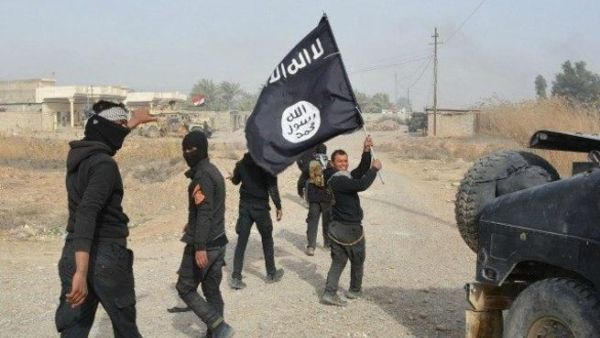More than one year after the Islamic State declared itself a caliphate, it can be difficult to put an exact number on the human toll of the terror group's activities, particularly in a region already ravaged by years of civil war and extremist fighting.
The UN High Commissioner for Human Rights on Monday released an updated death toll of Iraqi civilians from December 2014 to April 2015. The report says at least 15,000 people have been killed and 30,000 killed during that timeframe.
It's unclear just how many of those deaths can be attributed to IS -- also identified as Daesh and by the acronyms ISIS and ISIL.
Though the UN report doesn't differentiate between civilian deaths caused by IS and those caused by security forces, it seems to skew blame toward the terror group. The report details how Iraqis opposed to IS ideology, including ethnic and religious minority communities like the Yezidi, are "systematically abducted, killed or targeted in other ways."
"These acts appear to form part of an on-going policy that aims to suppress, permanently expel, or destroy many of these communities within ISIL areas of control," the UN report says.
The civilian death toll in Iraq the entire year prior -- January to December 2014 -- was 11,602, with 21,766 injuries, an earlier OHCHR report says. Again, the report documents "serious violations of international humanitarian law and gross abuses of human rights" perpetrated by IS, particularly between September and December.
IS didn't declare itself a caliphate until June 2014, but the Sunni extremist group has existed in one form or another for more than 15 years. It's likely some deaths dating back to the beginning of 2014 -- and indeed years before -- can be blamed on IS militants.
In Syria, the death toll caused by IS is even more difficult to pin down after years of civil war in which hundreds of thousands of people have been killed. UNHCR hasn't released a death toll report since August 2014 when it reported more than 191,000 people -- both civilians and security forces -- were killed between March 2011 and April 2014.
The Syrian Network for Human Rights (SNHR), though, released a report July 1 documenting the deaths of 11,090 civilians between Jan. 1, 2015 and June 30, 2015. Of that number, SNHR said IS was responsible for 945 deaths -- only 8.5 percent of the total civilians killed.
According to the report, the vast majority of Syrian civilian deaths in the first half of 2015 were at the hands of government forces -- 8,509 people or 77 percent of the total deaths. Armed opposition groups, the al-Nusra Front, the Democratic Union Party, international coalition forces and other unidentified groups were responsible for the other deaths.
A report from the International Business Times surveyed a number of human rights groups -- including SNHR -- in January and found similarly that the Assad regime was to blame for more civilian deaths than IS.
The Syrian Human Rights Committee documented 1,328 civilian deaths for December 2014, 49 at the hands of IS. The Violations Documentation Center in Syria said 1,030 civilians were killed by the government from Nov. 29, 2014 to Jan. 2, 2015 and 128 were killed by IS in the same time period.
In contrast, SNHR said 1,232 civilians were killed in December 2014, with IS responsible for 5 percent.
The disparity in numbers among human rights groups documenting civilian deaths in the region is indicative of the difficulty in calculating an accurate death toll brought about by IS and other actors.
Further complicating the matter are deaths beyond the Levant for which IS may or may not have claimed responsibility.
Amedy Coulibaly pledged loyalty to IS shortly before shooting to death 12 people at the offices of French magazine Charlie Hebdo. Days after the attack, though, al-Qaida in the Arabian Peninsula released a video claiming responsibility for the attack.
A number of other so-called lone wolf attacks across the globe -- like the killing of 38 people in June at a Tunisian hotel -- may have been inspired by the terror group.
By Danielle Haynes








